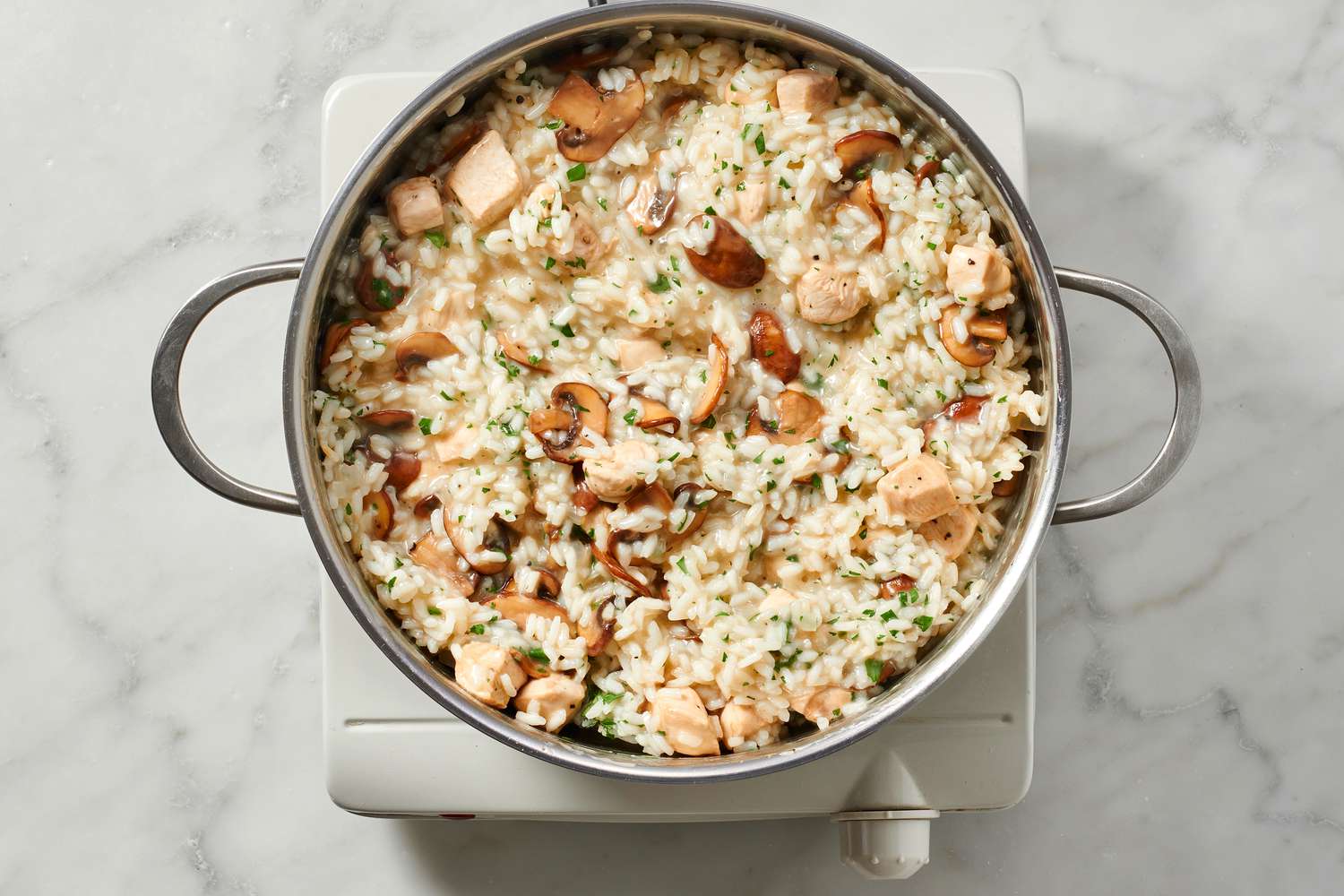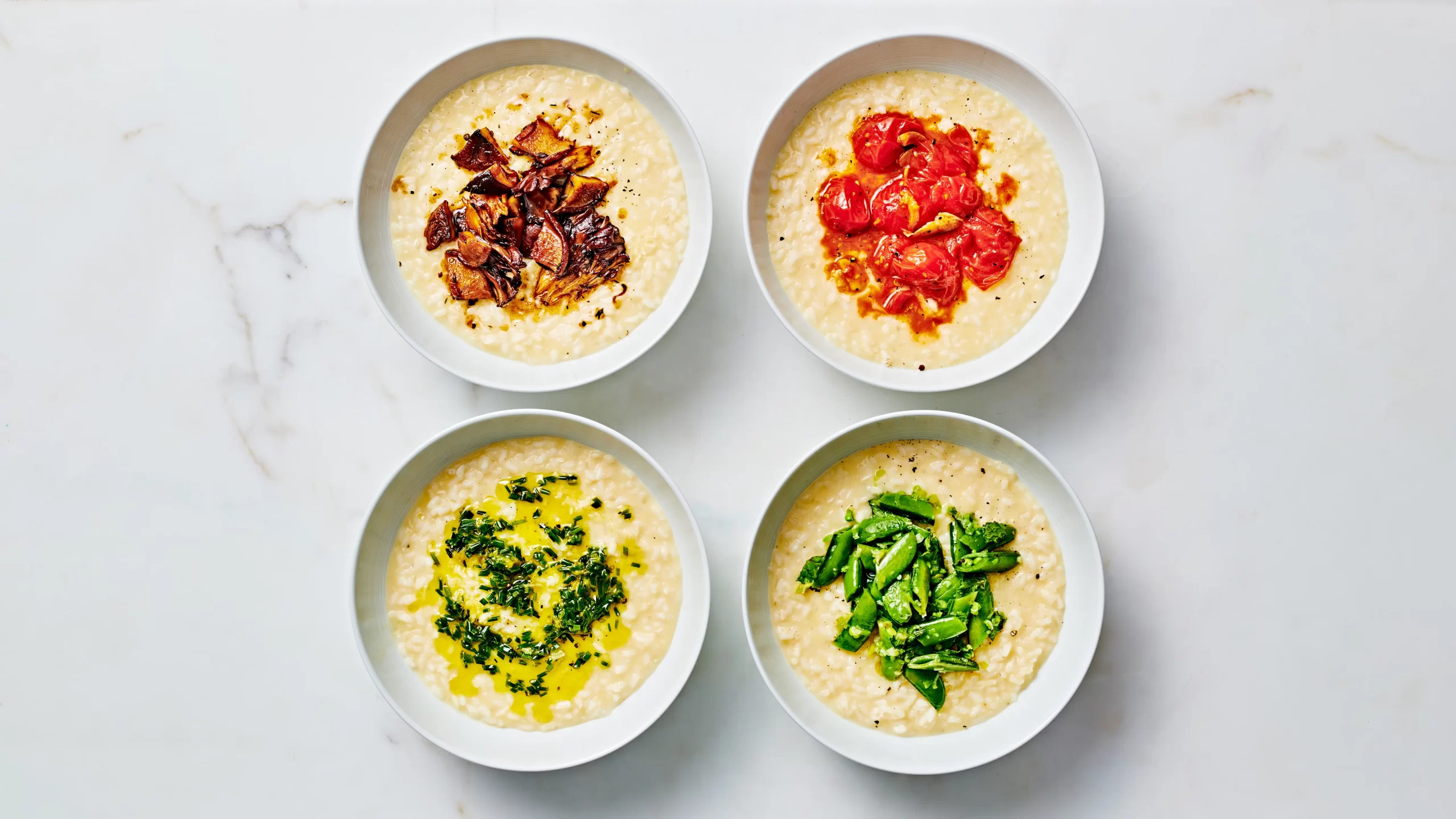
Risotto, a classic Italian dish, is renowned for its creamy texture and rich flavors. Often considered a labor of love, risoto requires patience, attention, and the right ingredients to transform humble rice into an exquisite culinary masterpiece. This article delves into the essence of risoto, exploring its history, preparation techniques, variations, and why it remains a beloved dish worldwide.
The History of Risotto: A Journey Through Time
Table of Contents
Toggle
The origins of risotto can be traced back to Northern Italy, specifically the Lombardy and Piedmont regions. The introduction of rice to Italy is credited to Arab traders in the Middle Ages. However, it wasn’t until the 16th century that rice cultivation took off in the fertile plains of the Po Valley. The unique climate and soil conditions in this region proved ideal for growing rice, leading to the development of various rice dishes, with risotto being the crown jewel.
Risotto’s popularity grew over the centuries, becoming a staple in Italian cuisine. The dish’s versatility and the ability to absorb flavors from a myriad of ingredients made it a favorite among chefs and home cooks alike. Today, risotto is enjoyed not just in Italy but across the globe, celebrated for its comforting yet sophisticated nature.
The Art of Making Risotto: Techniques and Tips
Making risotto is often seen as an art form, requiring skill and patience. The process begins with selecting the right type of rice. Arborio, Carnaroli, and Vialone Nano are the most commonly used varieties, known for their high starch content, which gives risoto its signature creamy consistency.
Key Ingredients and Preparation Steps
- Rice Selection: The choice of rice is crucial. Arborio is the most widely available, but Carnaroli, often referred to as the “king of rice,” is preferred by many chefs for its superior texture and ability to remain al dente.
- Broth: A flavorful broth is the backbone of any good risotto. Whether it’s chicken, vegetable, or seafood broth, it should be kept warm and added gradually to the rice.
- Soffritto: This is the base of the risoto, typically made with finely chopped onions sautéed in butter or olive oil. Garlic and other aromatics can also be added.
- Toasting the Rice: The rice is added to the soffritto and toasted for a few minutes. This step is essential as it helps the rice absorb flavors more effectively.
- Gradual Addition of Broth: The broth is added one ladle at a time, allowing the rice to absorb it slowly. This method ensures a creamy texture while keeping the rice grains distinct.
- Stirring: Constant stirring is key to releasing the starch from the rice, which creates the creamy consistency. It’s a labor-intensive process but well worth the effort.
- Finishing Touches: Once the rice is cooked to perfection, butter and Parmesan cheese are stirred in to add richness and depth of flavor. Fresh herbs, truffle oil, or other ingredients can be added to enhance the dish further.
Varieties of Risotto: Exploring Different Flavors

One of the most delightful aspects of risotto is its versatility. While the basic technique remains the same, the ingredients can vary widely, resulting in a plethora of delicious variations.
Classic Risotto Varieties
- Risotto alla Milanese: This iconic risotto from Milan is distinguished by its vibrant yellow color, achieved by adding saffron. The luxurious flavor of saffron, combined with beef broth and bone marrow, makes this a decadent dish.
- Risotto ai Funghi: Mushroom risotto is a favorite, especially during the fall when wild mushrooms are in season. The earthy flavors of porcini or chanterelles elevate this dish to new heights.
- Risotto al Nero di Seppia: A specialty from Venice, this risotto is made with cuttlefish and its ink, resulting in a striking black color and a unique, briny flavor.
Contemporary Twists on Risotto
- Lemon and Asparagus Risotto: A refreshing springtime dish, this risoto combines the zesty brightness of lemon with tender asparagus spears, creating a light yet satisfying meal.
- Pumpkin Risotto: Perfect for autumn, pumpkin risoto is creamy and slightly sweet, often enhanced with sage and nutmeg for added warmth.
- Seafood Risotto: Combining various seafood like shrimp, mussels, and clams, this risoto is a celebration of ocean flavors, often finished with a touch of lemon zest and fresh herbs.
The Elegance of Risotto: A Dish for Every Occasion
Risotto’s appeal lies not only in its flavor but also in its elegance. It’s a dish that can be dressed up or down, making it suitable for both casual family dinners and sophisticated gatherings.
Risotto in Fine Dining
In high-end restaurants, risotto is often featured as a centerpiece, showcasing the chef’s skill and creativity. Ingredients like truffles, foie gras, and lobster can transform a simple risotto into a gourmet experience. The meticulous preparation and presentation of risotto in fine dining establishments highlight its status as a culinary masterpiece.
Risotto at Home: Comfort and Elegance
Despite its association with fine dining, risotto is also a comforting dish that can be enjoyed at home. Its ability to incorporate leftovers and seasonal ingredients makes it an economical and practical choice. The process of making risoto can be therapeutic, allowing home cooks to engage in a mindful cooking experience that results in a delicious and satisfying meal.
Pairing Risotto: Complementing Flavors
Pairing risotto with the right beverages and side dishes can elevate the dining experience. Here are some suggestions for perfect pairings:
Wine Pairings
- White Wines: Crisp, acidic white wines like Pinot Grigio or Sauvignon Blanc complement the creaminess of risotto without overpowering its delicate flavors.
- Red Wines: For heartier risotos like those with mushrooms or meat, a light to medium-bodied red wine such as Chianti or Pinot Noir works well.
Side Dishes
- Salads: A simple green salad with a light vinaigrette can balance the richness of risotto, providing a refreshing contrast.
- Vegetables: Roasted or steamed vegetables make an excellent accompaniment, adding color and additional nutrients to the meal.
- Bread: A slice of crusty bread is perfect for soaking up any remaining sauce, enhancing the overall dining experience.
Risotto: A Global Phenomenon

While risotto is quintessentially Italian, its popularity has transcended borders. Chefs and home cooks around the world have embraced this dish, adding their unique twists and local ingredients.
Risotto in Modern Cuisine
In contemporary cuisine, risotto has been adapted to suit various dietary preferences. Vegan and gluten-free versions are now common, ensuring that everyone can enjoy this classic dish. The use of alternative grains like quinoa and barley has also introduced new textures and flavors to the traditional risotto.
Cultural Fusion
Fusion cuisine has given rise to innovative risotto dishes that blend flavors from different culinary traditions. For example, a Thai-inspired risotto might incorporate coconut milk and lemongrass, while a Mexican twist could feature ingredients like corn and chili peppers.
Conclusion: Risotto’s Timeless Appeal

Risotto remains a beloved dish for many reasons. Its creamy texture, rich flavors, and versatility make it a favorite in both home kitchens and fine dining establishments. The process of making risoto, though labor-intensive, is a rewarding experience that results in a truly exquisite culinary masterpiece. Whether enjoyed as a simple comfort food or a sophisticated gourmet dish, risoto’s elegance and timeless appeal continue to captivate food lovers around the world.
In conclusion, risoto is more than just a dish; it is a testament to the beauty of culinary craftsmanship. Its ability to adapt to various flavors and ingredients while maintaining its core essence is what makes risoto an enduring classic. So, the next time you savor a bowl of this jpslot creamy, flavorful rice, take a moment to appreciate the artistry and tradition that have made risoto a true masterpiece of flavor and elegance.






